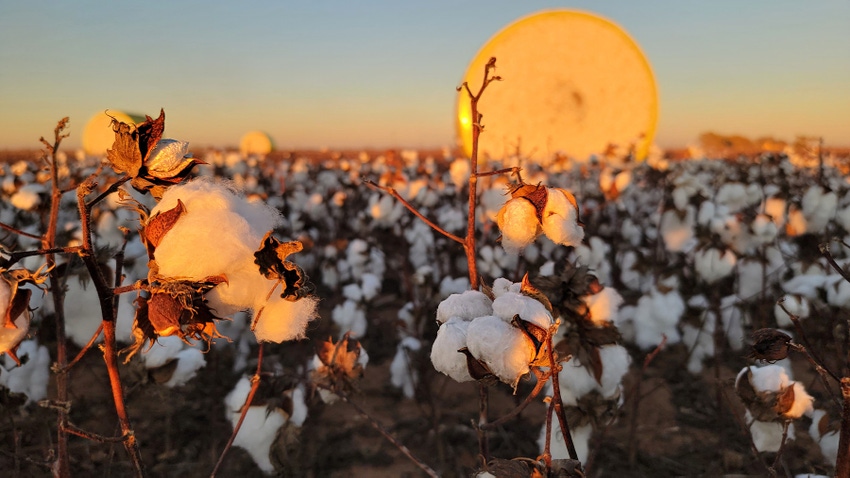
For spring planted crops like cotton, a key market influence in the fall season is the refinement of the national production forecast. U.S. cotton production forecasts are published monthly by USDA’s National Agricultural Statistics Service (NASS). For example, the current U.S. cotton production forecast is 13.13 million bales. The forecast is expressed in standard 480-pound bale equivalents (or statistical bales). Actual physical bales (or running bales) tend to weigh closer to 500 pounds, so analysts typically use conversion factors following USDA, e.g., 1.0275 statistical bales for every running bale.
Acreage and Production Data. Between May and July, NASS’s forecast of cotton production is based on surveyed planted acreage and assumed historical averages for yield and abandonment. Beginning in August, the production forecast incorporates grower survey data on acreage, yield, and abandonment. Also beginning in August, the South Texas cotton forecast incorporates data from “objective yield surveys” which involve field sampling of boll counts and weights. In September, this field sampling expands to include all of Texas, Arkansas, Georgia, and Mississippi, with repeat monthly sampling through December. Lastly, the production forecast is occasionally adjusted in the fall months based on crop insurance information (USDA Risk Management Agency) and/or certified acres data (USDA Farm Service Agency).
Ginnings Data. All U.S. cotton is ginned following harvest. Surveys of gins are performed by USDA NASS who then publishes a monthly forecast of cumulative bales ginned as of that month. For example, the number of actual U.S. bales ginned as of September 1 was forecasted at 484,450 running bales. This converts to 497,772 statistical bales, which is 4% of USDA’s September production forecast for this year’s crop. This is a seasonally normal percentage of the total U.S. crop.
Classing Data. All U.S. cotton bales are sampled for fiber quality. It follows that the most accurate, albeit unfolding, measure of cotton production is the cumulative count of bales classed by USDA’s Agricultural Marketing Service (AMS). These data are reported weekly as running bales. Through the week ending September 8, 2023, AMS reports cumulative classings of 531,866 running bales of upland cotton and no pima cotton. This converts to 546,492 statistical bales of all cotton which, unexpectedly, exceeds NASS’s ginned bale forecast. It is assumed that the weekly count of classed bales is always the more accurate measure.
Reconciliation/Refinement. The ginnings and classings data are published until the conclusion of ginning season, typically in the first quarter of the year following harvest. NASS will then reconcile their production forecast with final cumulative ginning and classing numbers (the latter two being converted to statistical bales). The effect of this reconciliation is the refining of NASS’s production forecast to its final estimate. Figure 1 shows that August production estimates have been between 15% below and almost 20% over final estimates with a lot of variation. Each monthly refinement in production estimates occurred until final estimates were achieved by May for the last 12 crop years (2011 through 2022). The refinement concluded by April in eight out of the 12 crop years and was finished in March in six out of the 12 crop years. In general, the tightening pattern of percent deviations from the final production forecast reflects the influence of the updated USDA data flow.
Source: Southern Ag Today
About the Author(s)
You May Also Like




